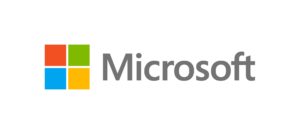Subscribe to The Podcast by KevinMD. Watch on YouTube. Catch up on old episodes!
Family nurse practitioner Erica Dorn discusses her article “ChatGPT in health care: Risks, benefits, and safer options.” In this episode, Erica explains how clinicians are experimenting with ChatGPT to help with HPI prompts, procedure documentation, and discharge instructions, while also cautioning against its risks such as inaccuracy, lack of HIPAA compliance, and limited integration with EHRs. She highlights the advantages of AI medical scribes, which provide secure, real-time, and health care-specific documentation solutions. Erica emphasizes practical takeaways for providers: use ChatGPT carefully for brainstorming, but adopt specialized AI tools for safer, more efficient, and compliant documentation.
Our presenting sponsor is Microsoft Dragon Copilot.
Microsoft Dragon Copilot, your AI assistant for clinical workflow, is transforming how clinicians work. Now you can streamline and customize documentation, surface information right at the point of care, and automate tasks with just a click.
Part of Microsoft Cloud for Healthcare, Dragon Copilot offers an extensible AI workspace and a single, integrated platform to help unlock new levels of efficiency. Plus, it’s backed by a proven track record and decades of clinical expertise, and it’s built on a foundation of trust.
It’s time to ease your administrative burdens and stay focused on what matters most with Dragon Copilot, your AI assistant for clinical workflow.
VISIT SPONSOR → https://aka.ms/kevinmd
SUBSCRIBE TO THE PODCAST → https://www.kevinmd.com/podcast
RECOMMENDED BY KEVINMD → https://www.kevinmd.com/recommended
Transcript
Kevin Pho: Hi, and welcome to the show. Subscribe at KevinMD.com/podcast. Today we welcome back Erica Dorn. She’s a nurse practitioner. Today’s KevinMD article is “Chat GPT and health care: Risks, benefits, and safer options.” Erica, welcome back to the show.
Erica Dorn: Thank you for having me.
Kevin Pho: All right, so tell us what your latest article is.
Erica Dorn: Yeah, so I specialize in helping nurse practitioners implement charting and time management tips so that they can get their chart notes written faster, create a better work-life balance, and stop charting at home. One of the newer charting tips, a topic that is very popular, is using AI to help write chart notes. I know I’ve heard a lot of providers talk about using ChatGPT, if it’s a good option, and how it can help them. I just wanted to talk today about some of the benefits, but then also some things that providers should really pay attention to, some of those cons and things they should be aware of.
Kevin Pho: AI scribes are really exploding in terms of that intersection between AI and health care. There are a lot of competing AI scribe companies out there, and it’s almost like the wild west, right? Eventually, there’s going to be consolidation; there are going to be winners and losers. From the nurse practitioner standpoint, tell us the type of questions that you’re being asked about regarding that intersection between AI and what they do in the exam room.
Erica Dorn: As far as utilizing ChatGPT, I get asked a lot if that’s a safe option, if it’s HIPAA compliant, if it includes clinical practice guidelines, and if it will replace our critical thinking skills. Those are some of the questions that I get asked about using ChatGPT. As far as using AI medical scribes, I get asked some similar questions: How does it work? Is it safe to use? What will it actually do for my chart note? How will it actually help me, and if it’s a good option to help save time?
Kevin Pho: Let’s talk about ChatGPT and let’s expand that to other commercial large language models like Google Gemini and Anthropic’s Claude. In general, for these commercial large language models, do they have a role in health care?
Erica Dorn: I think they do. We’ve seen AI in health care just explode over the past few months. We’re utilizing AI in a lot of different ways, from EKG interpretation, helping us with radiology interpretation, helping with drug manufacturing, and analyzing all the data. We’ve also seen it in hospital use too, to pick up on some of those early cues to figure out how the patient is tracking and if any complications are coming about. That’s how we’ve already seen AI in health care, and I do feel like AI has a part as far as charting.
One thing that a lot of providers are wondering is, “How can I save time charting? Can I utilize these tools to help me improve my charting and make it flow a lot easier?” I’ve heard of a lot of providers wanting to utilize ChatGPT to help them write better notes and get them signed faster.
Kevin Pho: Specifically, when it comes to HIPAA compliance and patient privacy concerns, tell us about some of the issues regarding these commercial models like ChatGPT.
Erica Dorn: ChatGPT is not HIPAA compliant, so I strongly encourage providers not to utilize it for adding patient-specific information. For example, I’ve heard of some providers copying and pasting their transcript from their visit with the patient into ChatGPT and then saying, “Summarize this and create a SOAP note for me.” I strongly discourage providers from doing that. ChatGPT is not HIPAA compliant, and so we need to be very, very careful with our patient’s personal information.
Kevin Pho: Some people would wonder what ChatGPT does with that information. You say that it’s not HIPAA compliant. What happens if we do put sensitive patient information into that ChatGPT model? What are some of the worst-case scenarios that can happen?
Erica Dorn: The information we put into ChatGPT goes out into the worldwide web, and so it would be so unfortunate if there was a breach of that patient confidentiality and if their information was spread throughout. That’s the really big thing that clinicians need to be aware of when using ChatGPT.
Kevin Pho: Okay, so let’s talk about ambient AI scribes. Like you said, your specialty is to help nurse practitioners be more efficient and decrease that charting time. What have you seen in terms of the efficacy when it comes to these ambient AI models? Do they really work, and do they really save time?
Erica Dorn: Yeah, I have seen them work and save clinicians a ton of time. One of the differences between ChatGPT and AI medical scribes is the actual production of the note. With ChatGPT, you can always ask it, “What are the questions or review of systems that I need to go over with the patient when they come in for abdominal pain?” But with AI medical scribes, it is doing that work as far as pulling the information from your visit. The AI technology listens to the patient and the provider, and then it can abstract the important information that needs to go in the chart note and essentially write your chart note for you.
I think the big difference is the time you are spending. Using ChatGPT, you have to put in those prompts. You have to ask it to create a comprehensive neurological exam. You have to ask ChatGPT how to create a template for a procedure. If you’re doing a laceration repair, you can ask ChatGPT how to write that. That can be helpful; it can help you save some time. But essentially, the AI medical scribe is picking up on that information that is said. A lot of them allow you to create your own templates, so you can create quick phrases or smart phrases, similar to those dot phrases, and have that information already in there. Then the AI medical scribe goes in and changes anything specific to the patient. That’s the really big difference and how I think AI medical scribes are better than using ChatGPT, just because it’s doing that next step for you. It’s HIPAA compliant. It’s writing your chart note for you, whereas with ChatGPT, you have to insert those prompts for it to produce the information.
Kevin Pho: In general, how much time have you seen being saved documenting in the exam room? Just give some ballpark contrasting numbers.
Erica Dorn: I would say an average of three to five minutes per patient. If you’re seeing twenty or thirty patients a day, that’s a substantial amount that you can save by using an AI medical scribe. The other tip that I share is signing chart notes off right after you see the patient. That way, the information is clear in your mind. You don’t have to, at the end of the day, try to recall what signs and symptoms the patient had. That’s just another way that even if it doesn’t necessarily save you a whole lot of time, it’s helping with your overall mental clarity. You don’t have that mental fatigue. You can move on to the next task without feeling bombarded by all of these open, unsigned charts that you still have to address. Using AI medical scribes writes the chart note right after you see the patient. You can copy and paste it into your template. A lot of the AI medical scribes are integrated into the EHR. I always recommend that providers review that chart note. Obviously, you’re signing it and you will be held liable. That’s just one way that AI medical scribes can help you stay caught up, stay consistent, and sign those chart notes faster.
Kevin Pho: How customizable is the output that the AI medical scribes come up with? One of the questions I often get asked is that the AI scribe doesn’t sound like me or may not write like me. How customizable is that output?
Erica Dorn: It depends on the AI medical scribe that you are using, but a lot of them are just growing in their technology. Many allow you to create charting templates. If you have a normal physical exam that you like to use, you can insert that so it sounds more like you. Then, as I was saying, the AI picks up on the information that’s abnormal and can change that. The templates are very customizable. A lot of them also learn your preferences. The AI technology can pick up on anything that you go and edit, and then you can ask the AI to learn that format. For the next charting note, it picks up on that.
For example, I was using an AI medical scribe, and it was producing the chart notes in very long-form sentences. I like to use short phrases in my charting. When I changed that and asked the AI to learn that format, for the next notes that it created, it made them in short phrases. That’s just one way that the technology is getting there, that it will sound more like us. There are the templates, the things we can do to insert our charting preferences and how we sound, so it will sound more like a provider and less like a computer.
Kevin Pho: I said earlier that it’s a little bit of the Wild West when it comes to AI scribes. There are many different companies trying to gain a foothold in this space, and eventually, I think some are going to be successful and some may be bought out. Are there any major differences, as far as you know, between the various brands of AI scribes?
Erica Dorn: The biggest difference right now is the EHR integration versus an independent website or app where you have to copy the note and then paste it into your EHR. I do agree. I think we will move towards EHR integration, and I think all the major EHR companies will have that AI medical scribe component. Pricing is fairly good across the board.
As far as the differences, there’s EHR integration versus independent. There are some new features like customizable templates. There are ICD codes and help with your billing and coding component. There are some other differences as far as writing an excuse, like a work release excuse, or a referral letter. I’ve seen some of the AI medical scribes offer that while others don’t, but it seems like they’re all catching up to each other very quickly. If you find an AI medical scribe company that you like, it’s very likely they will make these updates within the next several months just to try to stay up with the other AI medical scribes.
Kevin Pho: We’ve spent a lot of time talking about AI medical scribes, but there are a lot of other areas that AI is influencing what we do in health care. What are some other examples that AI is being used in the exam room that your nurse practitioners are telling you about?
Erica Dorn: Yeah, I alluded to this a little bit at the beginning, but with EKG interpretation and radiology interpretation, I think those are helpful ways that we will see AI. Patient monitoring will be a big one as far as, in the hospital setting, can it pick up on those early cues that a patient’s condition is going to deteriorate? Also, we’ll see a lot more outpatient-based applications, just with some of the limitations of access to health care. I think AI will be a very strong component. We’ve already seen the analyzation of data with these drug companies doing their research, and they save so much time by using AI to help them analyze that data.
Kevin Pho: What do you see coming up in the foreseeable future? I know that this field is so rapidly evolving. What do you see in the foreseeable future that we could expect from AI in health care?
Erica Dorn: I cannot predict the future, and I think we will continue to see new technologies coming. I don’t know any specifics that we’ll be seeing in our clinical practice, but I just want to encourage providers to accept AI. I know it still feels a little scary with a lot of unknowns, and there are some limitations, but I do agree that AI will be used in health care in many different aspects. Becoming familiar with it, becoming comfortable with it, and utilizing the AI technology that we do have, and then being aware of what’s coming as well, I think that’s going to set clinicians apart from other clinicians.
If you go for a job interview and they ask you about your feelings on AI, or maybe they’re using an AI technology in their practice setting and you’re not comfortable with that, that might limit your job opportunities. I think it’s something that we need to be cognizant of. We need to be aware, we need to embrace it, and just learn all the ways that AI can help us in health care.
Kevin Pho: Have you talked to some of your nurse practitioner colleagues who tried an AI scribe and decided for whatever reason it wasn’t for them and went back to the way they originally documented, like dictating? Have you had any of those cases?
Erica Dorn: I have had a few. I think some people just get stuck in their ways. They don’t want to learn a new technology; maybe it feels overwhelming to use it at first. If you’re used to dictating your notes or typing them out, that’s fine to do. I have just seen the impact of AI medical scribes and how much time it can save me in my own practice, but then also my other nurse practitioner followers. Again, it’s something to learn about, discover, and try for yourself. A lot of these AI medical scribes offer a free trial, so it’s something you can give a try in your own practice. If it doesn’t work, that’s fine, but I strongly encourage providers to give it a try.
Kevin Pho: I know that they’re being used a lot in the outpatient setting, like the one I’m familiar with. How about inside the hospital in inpatient settings?
Erica Dorn: The big one is patient monitoring. A lot of this involves picking up on vital signs and physical cues to help keep our patients safe. I don’t know the specific companies or anything that are in the hospital, but I know we’ve already seen so many different technologies and ways we can use AI. Again, it will just continue to explode and be able to help us as providers.
Kevin Pho: How about clinical documentation? Are AI scribes being used for documentation in an inpatient setting?
Erica Dorn: I don’t know for sure. I have heard of a few inpatient nurse practitioners that have tried. I feel like it may be a little bit more difficult unless it’s something where you’re seeing that patient for the first time. You can definitely use AI medical scribes to help you get that information in the chart note. As far as your daily rounding progress notes, you could utilize that technology. It’s a little bit harder because when you’re in the hospital setting, you’re usually rounding on one patient, you’ve already looked over their labs, you might get some phone calls or interruptions from nursing in between. It’s a little bit harder to open the AI medical scribe, start your visit, and not get any of those distractions. I think it’s something that will continue to evolve and grow.
Kevin Pho: We’re talking to Erica Dorn. She’s a nurse practitioner, and today’s KevinMD article is “Chat GPT and health care: Risks, benefits, and safer options.” Erica, let’s end with some take-home messages that you want to leave with the KevinMD audience.
Erica Dorn: Yeah. Again, I just strongly encourage providers to give AI medical scribes or the AI technology a try. It’s going to be vast in health care. It’s going to help us in so many ways, so I just encourage you to learn about it, embrace it, and give it a try.
Kevin Pho: Erica, thank you so much again for sharing your perspective and insight, and thanks again for coming back on the show.
Erica Dorn: Thanks for having me.

























